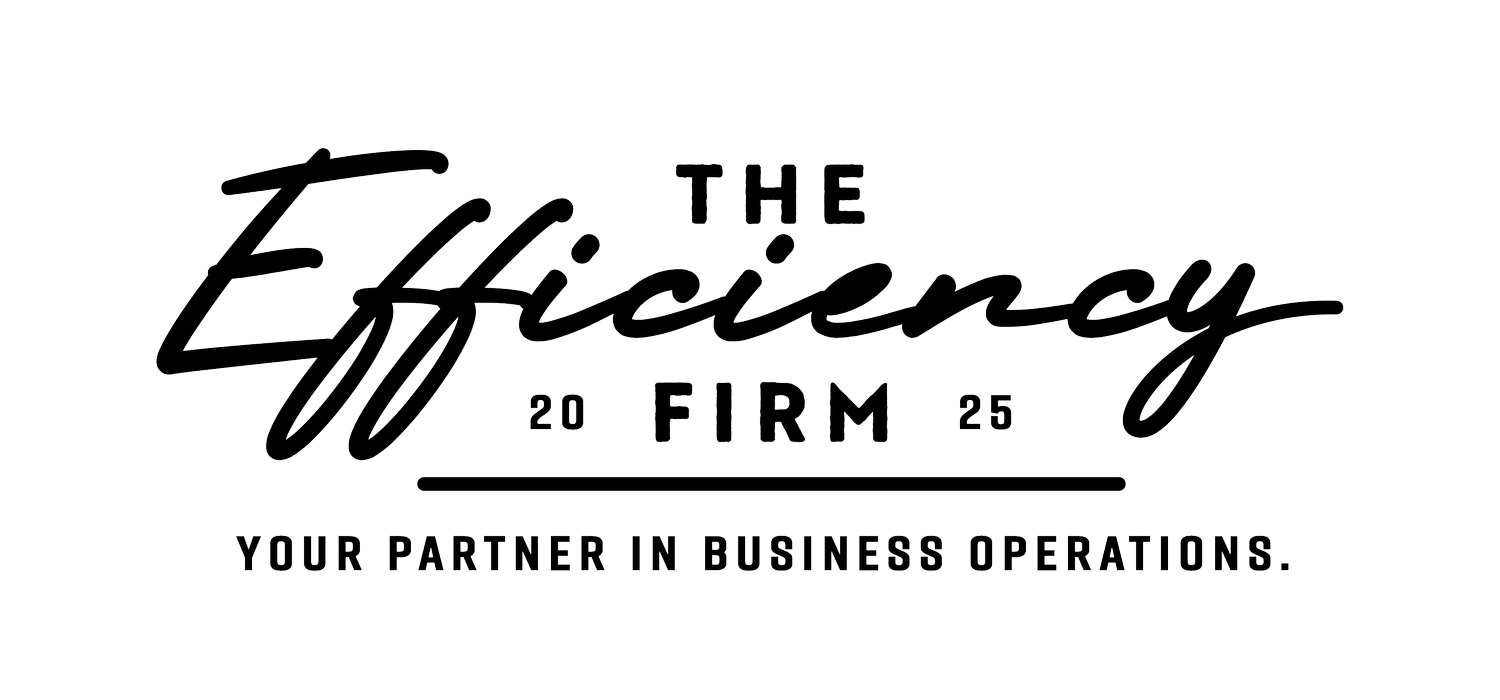“Every process is perfectly designed to get the results it gets.” — W. Edwards Deming
Translation: if you don’t like your current results, your processes must change.
What is The Efficiency Firm process for process improvement?
-
It’s free! For one hour we will get to know each other, your business goals, pain points, daily struggles, and discuss how we can help you get to where you can grow.
-
We will work with your team to understand the ins & outs of your business and the process we are improving or creating. Utilizing Six Sigma and other Process Improvement Plans we will create a unique Process Improvement Plan designed specifically for your company to maximize efficiency and ROI.
-
After your process audit, you can take it from there or hand it off to us. (We prefer if you let us handle it!) If you hand it off to us for Implementation, we will put the Process Improvement Plans in motion. We will work with your team to make sure everyone is excited for these new changes and trained properly for deliverable hand-off.
-
After implementation, your team will be well trained and everyone on your staff will understand the new processes. You and your team can expect to receive a written Standard Operating Procedure and / or Training Guide.
Frequently Asked Questions
-
It all depends on the complexity of your process and the size of your business. This is discussed after your consultation once we understand the needs of your business more. You can expect about 4 weeks at minimum.
-
Six Sigma is a proven, data-driven methodology for improving business processes by reducing errors, eliminating waste, and increasing efficiency. Originally developed at Motorola in 1986 by engineer Bill Smith and championed by CEO Bob Galvin, Six Sigma gained worldwide recognition in the 1990s when General Electric (GE), under CEO Jack Welch, adopted it as a core business strategy.
The goal of Six Sigma is near-perfect performance — no more than 3.4 defects per million opportunities — creating consistent, high-quality results. To achieve this, Six Sigma uses structured frameworks like DMAIC (Define, Measure, Analyze, Improve, Control) for improving existing processes and DMADV (Define, Measure, Analyze, Design, Verify) for creating new ones.
Six Sigma also includes a tiered certification system (White, Yellow, Green, Black, and Master Black Belts) that equips professionals with the tools to identify inefficiencies, analyze data, and lead change.
Today, businesses of all sizes, not just global corporations, use Six Sigma to streamline workflows, boost customer satisfaction, and improve profitability.
-
No! That’s what is so great about hiring The Efficiency Firm. Your team will need to adhere to the meeting schedule that is approved at the beginning of the process audit, but other than that - everyone can go about their day as normal until training & implementation. We take on the bulk of your process improvements so you can keep doing what you need to do to grow.
-
We love this question! A true process improvement plan understands that changes happens during phases of growth…even the ones that we deliver to you. During the implementation phase, we will assign a process leader within your staff. This team member is responsible for knowing and updating the process as your company grows. OR, we can take on this task for you. We are set up to be your partner in business operations. This means we are there for you to while you evolve. We can update your process for you if you wish to not have a staff member take on this responsibility.
-
Your ROI depends on the size of your business and the challenges you face. Across industries, companies that commit to process improvement see significant and measurable returns. By reducing wasted time, cutting errors, and streamlining workflows, businesses often realize:
Cost Savings: Lower operating costs by eliminating inefficiencies and rework.
Time Savings: Employees spend more time on revenue-generating activities instead of fixing preventable issues.
Revenue Growth: Faster project delivery and better customer experiences lead to higher retention and more referrals.
Employee Retention: Clear roles and smoother workflows reduce frustration and turnover.
Scalability: Systems that grow with your business prevent chaos as you expand.
Industry studies show that businesses using Six Sigma and structured process improvement approaches can achieve returns of 2x–10x their initial investment within the first 12–18 months.



